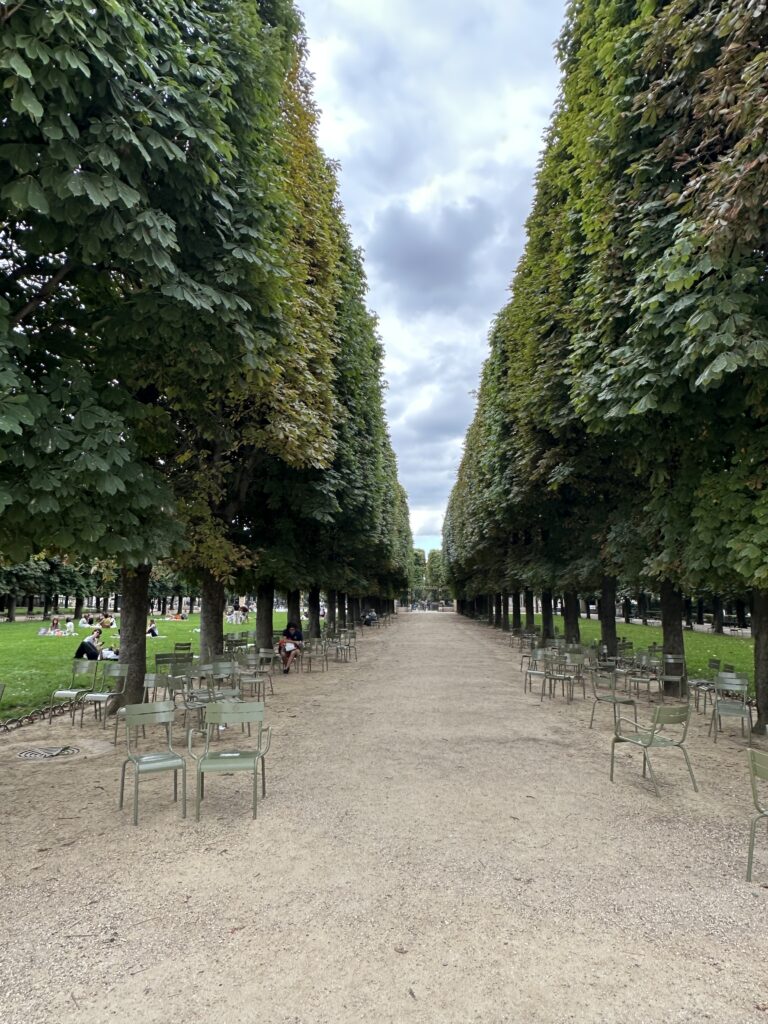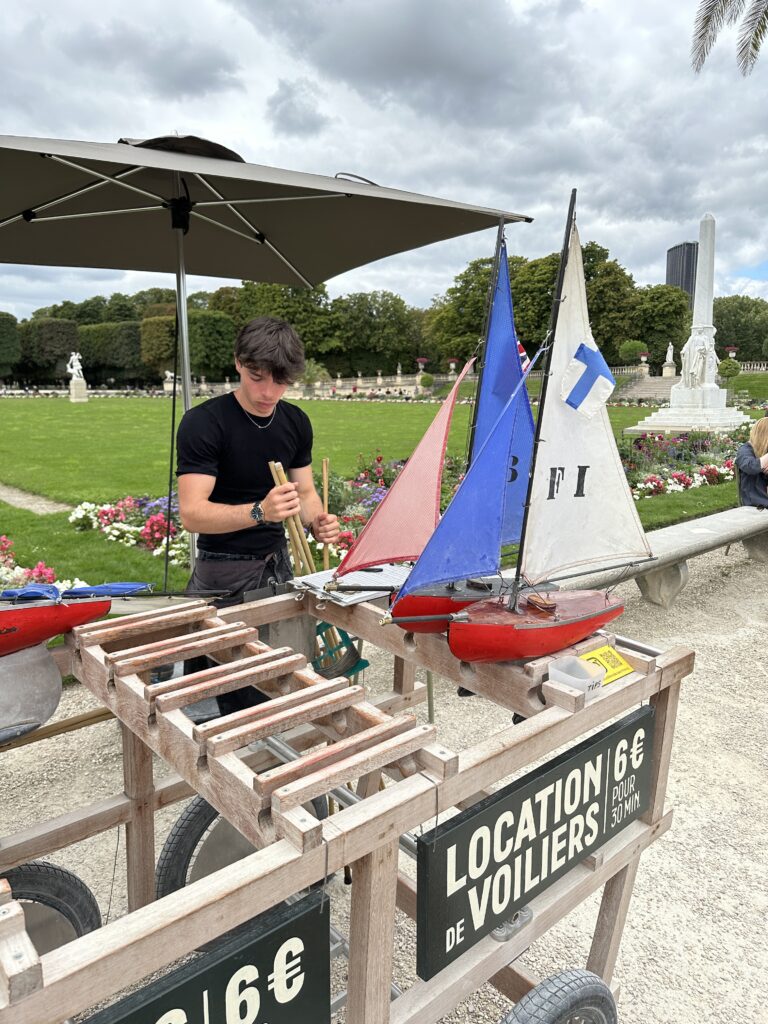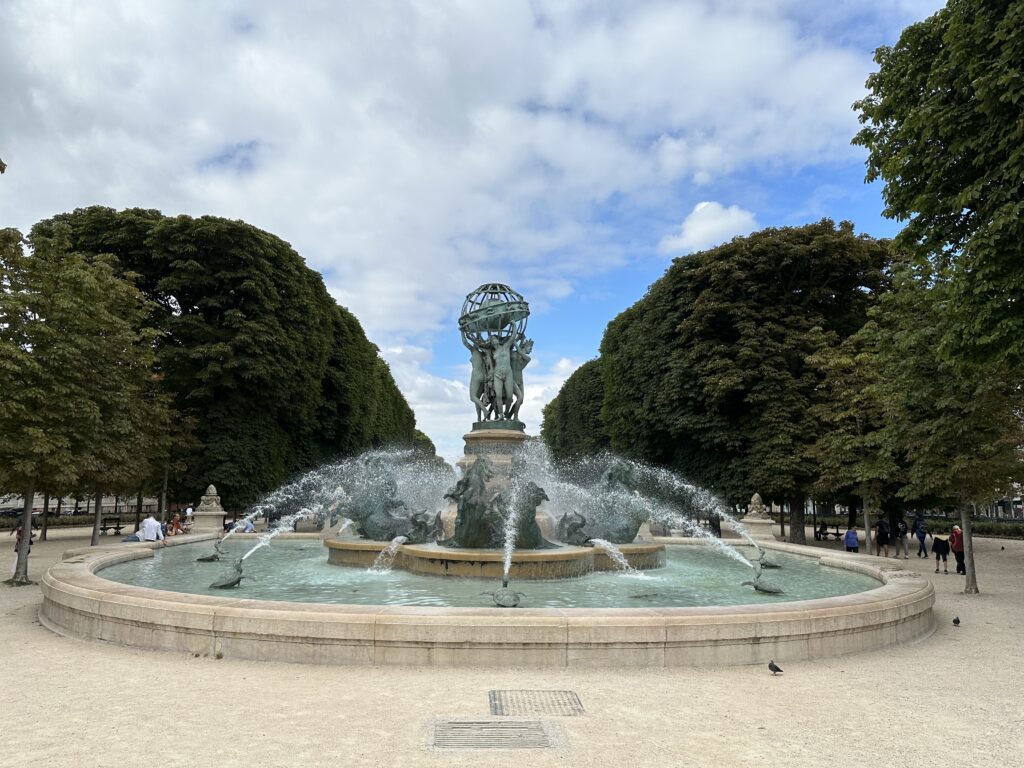
By Gerry Barker
Photos by Gerry and Pam Barker
PARIS — The last time we saw Paris — isn’t that a song? — we arrived on the Chunnel train from London and spent a glorious time exploring from the “Hop On, Hop Off” bus. This time, we planned to strike out on our own to experience the City of Light.
Timing-wise, August might not be the best month, only because it’s the month many Parisians take their holiday. While we found some museums closed, as well a few shops and restaurants, you could hardly notice. In fact, it’s still peak tourist season, and the usual hotspots, like the Eiffel Tower, Versailles and the Louvre, were swarming with people.

We thought about signing up for a guided tour, but ultimately decided to strike out on our own. So, with the help of the Internet, and Uber, we identified a few places to visit. By the way, we found Uber a great way to get around the city. Taking Uber from Orly Airport to our hotel was half the cost of a taxi, and anytime we needed a ride, it arrived in a few minutes. Plus with my credit card on file, paying was a snap.
Pam — ever the romantic — wanted to have a picnic in a park; spreading a blanket, eating cheese and fruit, sipping wine. After doing a little research, I had to tell her drinking alcohol in a public park is a strict no-no. Dream-crusher is not a role I relish.
Still, finding a park was a good idea, so with a little help from Google, we ordered up an Uber and headed for The Jardin du Luxembourg, or in English, the Luxembourg Garden. We soon arrived at the park’s imposing black and gold metal gates that marked the entrance. In the distance was the Luxembourg Palace, which now houses — we found out later — the French Senate, which owns the park.



Located on some 57 acres in the Left Bank, the park was created in 1612 by Marie de’ Medici, the widow of King Henry IV, who built the palace as her residence. Today, it’s an oasis of flowers, fountains and long, tree-lined promenades (does anyone do tree-lined promenades better than the French?).


Following the footpath along one of those long promenades, we arrived at a large open area known as the Great Basin — an octagonal pond surrounded by magnificent flower beds. At one end, dozens of children were engaging in one of the park’s claims to fame: Model boats. You start by renting one of the wooden boats from a vendor, which comes with a long, wooden stick. Said boat is placed in the pond, then pushed out and along in the water by the stick. We weren’t sure who was enjoying it more — the kids or their parents.



The park is also the scene for puppet shows. But the main activity is finding one of the empty, green metal chairs that encircle the pond and simply sit, relax, watch the boats or relish the moment. It you like a little peace with your quiet, this is it.
Next, we set out to find the adjacent art museum, aided by a friendly Senate guard carrying a formidable-looking weapon behind an iron fence. We passed more fountains and sculptures as we rounded the corner and came to the museum’s entrance — which was locked. Closed for August, we found out.



But there was a consolation of sorts — the Mademoiselle Angelina tea room. Located on the street in front of the museum, the outdoor terrace tables were calling our name. Savoring a glass of champagne, we perused the menu and settled on the omelet. We definitely chose wisely — it was one of the best we ever tasted. It also gave Pam a chance to practice her French with our waitperson, Johanna, who was just a delight. We’ve learned that even if you don’t speak the language, just making the effort gains you a lot of brownie points.
After lunch, we explored more of the park before finding an open grassy spot by the promenade and spreading our blanket. Pay close attention to the signs — most grass areas are off limits to foot traffic, but this was clearly an area where being on the grass is allowed, judging from all the people around us.
While Pam didn’t get to have her cheese and wine picnic, it was still special. As the French say, “La douceur de ne rien faire” — “The sweetness of doing nothing.”


As we departed the gardens, we entered the adjoining park known as the Garden of the Great Explorers. At the southern end, in the Marco Polo Garden, is the famous bronze Fontaine de l’Observatoire. Built starting in 1867, its central feature is four women supporting a celestial sphere, symbolically representing Africa, America, Asia and Europe. Jets of water shoot from turtles toward the horses in the center.
It may not have the glamor of the Eiffel Tower, but if you seek a tranquil respire from the maddening crowds, you can find that in the parks of Paris, just as they have here for over 400 years.




Be the first to comment